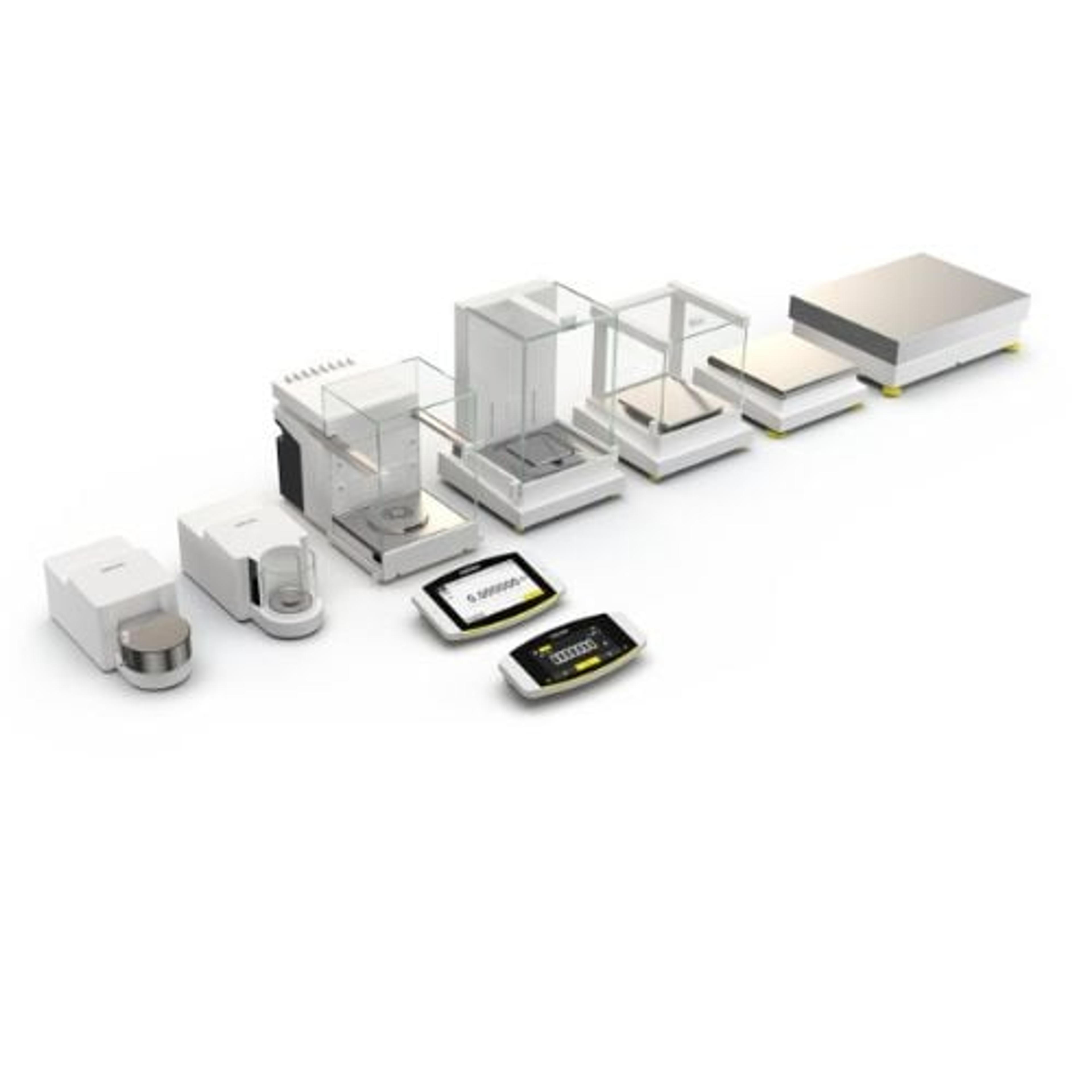Top 10 tips to navigate the revised European Pharmacopoeia chapter 2.1.7 "Balances for analytical purposes"
Explore our guide to understanding the impacts the new chapter will have on your manufacturing workflows
22 Dec 2021

The European Pharmacopoeia (Ph.Eur.) is a guide to the quality standards that drug manufacturers supplying the EU market must adhere to. The latest publication of the Ph.Eur. includes a new chapter, 2.1.7 “Balances for analytical purposes”, coming into effect on January 1, 2022.
Following the release of this revised Ph.Eur., we spoke with Dr. Julian Haller, metrology engineer from Sartorius who was involved in writing this new chapter to help answer the frequently asked questions (FAQs) on the chapter. This guide contains all the need-to-know information on how this update will affect your drug manufacturing processes. From analytics and calibration to performance checks and test loads, read on for 10 FAQs to understanding what these new regulations will mean for your workflows.
1) What is the European Pharmacopeia and am I affected by the new chapter?
The European Pharmacopoeia is defined by its publisher, the European Directorate for the Quality of Medicines & Healthcare (EDQM) as “a single reference work for the quality control of medicines in the signatory states of the Convention on its elaboration.”
It is a legally binding collection of monographs describing the quality standards for ingredients, dosage forms, and methods of analysis for medicines for both human and veterinary use.
It is thus generally applicable for all producers of medicines and/or substances for pharmaceutical use who market their products in the signatory states of the Convention. The new chapter will affect any of these producers if they use “balances for analytical purposes”, as the chapter is titled.
2) Is balance model XYZ compliant with the new chapter?
A particular balance model can neither be compliant nor non-compliant with the Ph.Eur., per se. However, there are some general requirements listed in chapter 2.1.7. For example, it must be ensured that “the installation and operating conditions do not have a negative impact on the performance of the balance". Of course, some balance models provide features (e.g., ionizers and temperature-driven internal adjustments) to support the user in ensuring the above.
The only specific requirement is that the balance you use must be grounded, which should be the case for state-of-the-art models and is realized via the electrical supply for all current Sartorius models.
3) What exactly is meant by “analytical purposes”? Are preparational weighings (e.g., preparing buffer solutions) also subject to the regulation?
Chapter 2.1.7 specifies that “Any weighings performed as part of tests prescribed to establish compliance with a monograph of the European Pharmacopoeia must be carried out according to the principles outlined in this chapter.” When assessing the question of whether a specific balance is affected, users should orientate themselves on this formulation. In case of doubt, users should additionally consider whether the result of the weighing is relevant for the assessment of compliance with the corresponding monograph or not.
4) What are the main differences to Chapter 41 of the United States Pharmacopeia (USP)?
The applicability of the respective chapter is somewhat broader in the Eur. Ph. (“analytical purposes”) when compared to the USP (“when substances must be accurately weighed”), and there are also a few significant differences concerning the performance checks:
- For the repeatability check, the Ph.Eur. requires a test load no bigger than 5 % of the Max but at least 100 mg, while the USP does not give any comparable restrictions. In both guides, the user must define a “desired smallest net weight”, which is to be bigger than a “minimum net weight” calculated from the result of the repeatability measurement.
- The “sensitivity” check of the Ph.Eur. is similar to the “accuracy” check of the USP, but the acceptable deviation in the Ph.Eur. is 0.05 %, which is smaller than the 0.10 % accepted in the USP.
- For both performance checks, the Ph.Eur. explicitly requires single piece test loads, while this is not the case in the USP. However, Sartorius would generally recommend the usage of single piece test loads where possible.
5) Do I have to conduct the performance checks myself or should they be done by a service provider?
This is up to the user. Generally, the performance checks can be carried solely by the user itself. However, it may be recommendable to have external service providers also conduct performance checks from time to time in order to have some independent external confirmation. The Sartorius Service offers a respective “Ph.Eur. Minimum Weight Certificate” for this purpose, where measurements and results of the two performance checks are documented.
6) How often should the performance checks be conducted?
This is not defined within chapter 2.1.7 of the Ph.Eur. or USP <41> and must thus be defined by the user. Chapter 2.1.7 states that “The frequency of the qualification and performance checks is defined in each user’s quality management system.” Sartorius recommends here to define this frequency based on the risk of the particular application and the general risk of exceeding the allowed tolerances between two consecutive performance checks (e.g., considering implemented safety margins).
7) Which weights are allowed for the “sensitivity” performance check?
Weights complying with either OIML R-111 or ASTM E-617 are required for this test. Generally, the nominal weight value can be used, if the maximum permissible error (MPE) of the particular weight is not bigger than one third of the test specification (i.e., MPE ≤ 0.05 % /3). This is fulfilled, for example, for all weights ≥ 500 mg that are of Class F1 or better according to OIML R-111. For bigger weights, even Class F2 or M1 may be sufficient, but the above criterion should be checked for each case.
Traceability of the weights is also required for this test, which means that they have to be calibrated periodically with a recalibration interval that has to be defined by the user.
8) Which “Max” value has to be considered for the choice of test loads for MR and MI devices?
Multi-range (MR) and multi-interval (MI) balances comprise more than one “Max” value, usually denoted as “Max1=120 g | Max2=220 g” or “Max = 120 g | 220 g”, for example. In this case, it is not clearly defined within Ph.Eur. whether the “5 % of Max” (as the upper limit for the repeatability test load and the lower limit for the sensitivity test load, respectively) applies to Max1 or Max2. In this case, Sartorius recommends to use weights that fulfill the requirements for both Max values. For the above example, a test load of 10 g for the repeatability test fulfills the requirement “≤ 5 % of Max” for both Max values and similarly, a sensitivity test load of 100 g fulfills the requirement “≥ 5 % of Max” for both Max values (and can still be used for both ranges as it is ≤ Max1).
For MR and MI balances, it should be sufficient to perform both performance checks in the first | finest (partial) weighing range only.
9) What are the requirements concerning “calibration”? Is it possible to cover the performance check requirements with a calibration certificate according to EURAMET cg-18?
Chapter 2.1.7 requires that “instruments must be periodically calibrated […] by the user or by a suitable competent body”. Further requirements on calibrations are explicitly mentioned (e.g., metrological traceability and measurement uncertainty). Therefore, having the calibrations conducted by an accredited calibration laboratory is recommended so that competence is ensured through this accreditation and the above requirements are fulfilled. Furthermore, chapter 2.1.7 recommends that calibrations should be performed before and after any “significant operation” (see next question). Accredited calibration laboratories offer a so-called “as found/as left” (or “before/after”) calibration for that purpose.
Sartorius and most other accredited calibration laboratories perform calibrations of weighing instruments according to the calibration guideline “EURAMET cg-18”. Such calibrations comprise a repeatability measurement as well as a measurement of the error of indication. While the results of the latter can be used for an assessment of the “sensitivity” requirement, the repeatability measurement of such calibrations (as required by the calibration guideline) is usually performed with test loads of approximately 50 % of Max, which contradicts the requirement “≤ 5 % of Max” of chapter 2.1.7. However, some calibration laboratories like Sartorius provide the option for an additional repeatability measurement at small loads, which could then be used for an assessment of the “repeatability” requirement.
10) What is a “Significant Operation” according to chapter 2.1.7 of the Ph.Eur.?
As mentioned in the previous question, chapter 2.1.7 recommends performing a calibration before and after any “significant operation” is carried out on the balance that “significantly alters its measurement performance”. Such significant operations are further specified as including “repairs, transfer of the balance to another location or mechanical adjustment” but not including “leveling the balance or adjustments using built-in weights”. For further operations carried out on the balance that are not explicitly mentioned here, users should decide risk-based, whether the operation significantly alters the measurement performance in order to decide, whether a calibration before and after this operation is required.

